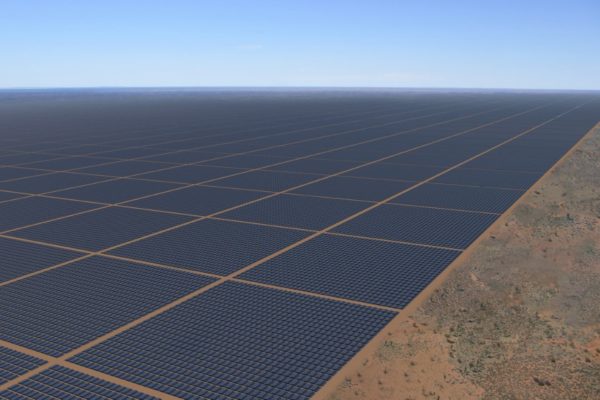Last year, a study prepared by Indonesia’s Department for Renewable Energy and Energy Conservation (Energi Baru Terbarukan dan Konservasi Energi) and the Danish Energy Agency, titled the Renewable Energy Pipeline, called for 2.38 GW of solar generation capacity to be added in 2022, 6.7 GW of new projects by 2025 and 14.9 GW by 2030.
A newly announced partnership between Quantum Power Asia (QPA) and German large-scale PV developer ib vogt could see that 2022 target overachieved in one fell swoop, as the pair look to construct a AUD$6.7 billion 3.5 GW solar and storage facility in Riau, Indonesia.
However, rather than serving Indonesia’s renewable energy transition needs (the country is one of the world’s top ten greenhouse gas emitting states), the project development partners are planning to export the plant’s 4 TWh of annually generated solar energy to Singapore.
The project
Indonesia’s Riau Archipelago comprises 1,796 islands between Sumatra, Borneo and the Malay Peninsula south of Singapore. QPA and ib vogt plan to construct a 3.5 GW solar plant on 4,000 hectares with a storage capacity of 12 GWh which will be exported to Singapore via an undersea cable.
The Anantara Project (its name taken from Anantara Energy Holdings, a joint-venture with ib vogt) comes in response to Singapore’s Energy Market Authority (EMA) request for proposals to supply and import clean energy from neighbouring countries as it looks to achieve carbon neutrality by 2050.
When fully commissioned in 2032, QPA says the Anantara project would be able to deliver approximately 8% of Singapore’s annual electricity generation.
QPA managing director and CEO, Simon G. Bell, said the company is “excited to partner ib vogt and present this major integrated initiative to EMA. Should we be successful in being awarded an import licence to Singapore, we will bring up to $5 billion of capital into Indonesia from Singapore, creating more than 30,000 jobs to build what will become the largest PV-storage system globally to date. it will also contribute significantly to Singapore’s journey towards carbon neutrality.”

ib vogt’s CEO Anton Milner agreed, noting the “bilateral energy import initiative is a landmark project globally and will be a catalyst for the region’s transformation towards clean, carbon-free energy.”
“Based on the work done together with Quantum Power Asia and Union Energy Corporation” continued Milner, “we are confident we have submitted a compelling proposal to EMA in order to create sustainable long-term value both for Singapore and Indonesia.”
Singaporean electricity retailer Union Energy Corporation (UEC) has also partnered with the Anantara project in order to distribute the clean imported energy to residential, industrial and commercial customers.
UEC CEO Ellen Teo said “The recent volatility of energy prices and challenges faced by Singapore’s electricity market underscores the urgent need to review our supply of renewable energy. We are honoured to partner Quantum Power Asia and ib vogt in this transformational project which will greatly benefit Singaporean homes, businesses and the nation at large as we progress towards net zero.”
Solar-powered Singapore
Of course, this is not the first mega-scale PV project slated to import solar energy to Singapore via undersea cables. The proposed $26 billion Australia-ASEAN Power Link project, the brainchild of Singapore-based Sun Cable, is set to feature at least 14 GW of prefabricated and pre-wired 5B Maverick solar panels in the Northern Territory outback, coupled with an estimated 33 GWh of battery storage, and transported via a 3,800-kilometre high-voltage direct-current (HVDC) submarine cable from Darwin to Singapore.

Of course, the length of undersea cable between the Riau Islands and Singapore is far shorter, but considering Singapore’s hunger for clean energy there is more than enough space in the market.
Indeed, in January 2021, United Arab Emirates (UAE) state-owned renewables company Masdar signed a memorandum of understanding with Singapore-based Tuas Power, French energy group EDF, and Indonesian state-owned utility PT Indonesia Power to explore the development of a 1.2 GW solar and potential storage facility in Indonesia for export to Singapore.
Currently, approximately 95% of Singapore’s electricity is generated from natural gas.
This content is protected by copyright and may not be reused. If you want to cooperate with us and would like to reuse some of our content, please contact: editors@pv-magazine.com.









By submitting this form you agree to pv magazine using your data for the purposes of publishing your comment.
Your personal data will only be disclosed or otherwise transmitted to third parties for the purposes of spam filtering or if this is necessary for technical maintenance of the website. Any other transfer to third parties will not take place unless this is justified on the basis of applicable data protection regulations or if pv magazine is legally obliged to do so.
You may revoke this consent at any time with effect for the future, in which case your personal data will be deleted immediately. Otherwise, your data will be deleted if pv magazine has processed your request or the purpose of data storage is fulfilled.
Further information on data privacy can be found in our Data Protection Policy.